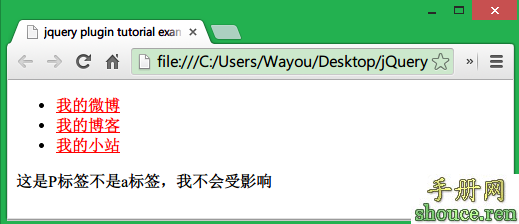JavaScript 开发人员需要知道的简写技巧
本文来源于多年的 JavaScript 编码技术经验,适合所有正在使用 JavaScript 编程的开发人员阅读。
本文的目的在于帮助大家更加熟练的运用 JavaScript 语言来进行开发工作。
文章将分成初级篇和高级篇两部分,分别进行介绍。
初级篇
1、三目运算符
下面是一个很好的例子,将一个完整的 if 语句,简写为一行代码。
- const x = 20;
- let answer;
- if (x > 10) {
- answer = 'greater than 10';
- } else {
- answer = 'less than 10';
- }
简写为:
- const answer = x > 10 ? 'greater than 10' : 'less than 10';
2、循环语句
当使用纯 JavaScript(不依赖外部库,如 jQuery 或 lodash)时,下面的简写会非常有用。
- for (let i = 0; i < allImgs.length; i++)
简写为:
- for (let index of allImgs)
下面是遍历数组 forEach 的简写示例:
- function logArrayElements(element, index, array) {
- console.log("a[" + index + "] = " + element);
- }
- [2, 5, 9].forEach(logArrayElements);
- // logs:
- // a[0] = 2
- // a[1] = 5
- // a[2] = 9
3、声明变量
在函数开始之前,对变量进行赋值是一种很好的习惯。在申明多个变量时:
- let x;
- let y;
- let z = 3;
可以简写为:
- let x, y, z=3;
4、if 语句
在使用 if 进行基本判断时,可以省略赋值运算符。
- if (likeJavaScript === true)
简写为:
- if (likeJavaScript)
5、十进制数
可以使用科学计数法来代替较大的数据,如可以将 10000000 简写为 1e7。
- for (let i = 0; i < 10000; i++) { }
简写为:
- for (let i = 0; i < 1e7; i++) { }
6、多行字符串
如果需要在代码中编写多行字符串,就像下面这样:
- const lorem = 'Lorem ipsum dolor sit amet, consectetur\n\t'
- + 'adipisicing elit, sed do eiusmod tempor incididunt\n\t'
- + 'ut labore et dolore magna aliqua. Ut enim ad minim\n\t'
- + 'veniam, quis nostrud exercitation ullamco laboris\n\t'
- + 'nisi ut aliquip ex ea commodo consequat. Duis aute\n\t'
- + 'irure dolor in reprehenderit in voluptate velit esse.\n\t'
但是还有一个更简单的方法,只使用引号:
- const lorem = `Lorem ipsum dolor sit amet, consectetur
- adipisicing elit, sed do eiusmod tempor incididunt
- ut labore et dolore magna aliqua. Ut enim ad minim
- veniam, quis nostrud exercitation ullamco laboris
- nisi ut aliquip ex ea commodo consequat. Duis aute
- irure dolor in reprehenderit in voluptate velit esse.`
高级篇
1、变量赋值
当将一个变量的值赋给另一个变量时,首先需要确保原值不是 null、未定义的或空值。
可以通过编写一个包含多个条件的判断语句来实现:
- if (variable1 !== null || variable1 !== undefined || variable1 !== '') {
- let variable2 = variable1;
- }
或者简写为以下的形式:
- const variable2 = variable1 || 'new';
可以将下面的代码粘贴到 es6console 中,自己测试:
- let variable1;
- let variable2 = variable1 || '';
- console.log(variable2 === ''); // prints true
- variable1 = 'foo';
- variable2 = variable1 || '';
- console.log(variable2); // prints foo
2、默认值赋值
如果预期参数是 null 或未定义,则不需要写六行代码来分配默认值。我们可以只使用一个简短的逻辑运算符,只用一行代码就能完成相同的操作。
- let dbHost;
- if (process.env.DB_HOST) {
- dbHost = process.env.DB_HOST;
- } else {
- dbHost = 'localhost';
- }
简写为:
- const dbHost = process.env.DB_HOST || 'localhost';
3、对象属性
ES6 提供了一个很简单的办法,来分配属性的对象。如果属性名与 key 名相同,则可以使用简写。
- const obj = { x:x, y:y };
简写为:
- const obj = { x, y };
4、箭头函数
经典函数很容易读写,但是如果把它们嵌套在其它函数中进行调用时,整个函数就会变得有些冗长和混乱。这时候可以使用箭头函数来简写:
- function sayHello(name) {
- console.log('Hello', name);
- }
- setTimeout(function() {
- console.log('Loaded')
- }, 2000);
- list.forEach(function(item) {
- console.log(item);
- });
简写为:
- sayHello = name => console.log('Hello', name);
- setTimeout(() => console.log('Loaded'), 2000);
- list.forEach(item => console.log(item));
5、隐式返回值
返回值是我们通常用来返回函数最终结果的关键字。只有一个语句的箭头函数,可以隐式返回结果(函数必须省略括号({ }),以便省略返回关键字)。
要返回多行语句(例如对象文本),需要使用()而不是{ }来包裹函数体。这样可以确保代码以单个语句的形式进行求值。
- function calcCircumference(diameter) {
- return Math.PI * diameter
- }
简写为:
- calcCircumference = diameter => (
- Math.PI * diameter;
- )
6、默认参数值
可以使用 if 语句来定义函数参数的默认值。ES6 中规定了可以在函数声明中定义默认值。
- function volume(l, w, h) {
- if (w === undefined)
- w = 3;
- if (h === undefined)
- h = 4;
- return l * w * h;
- }
简写为:
- volume = (l, w = 3, h = 4 ) => (l * w * h);
- volume(2) //output: 24
7、模板字符串
过去我们习惯了使用“+”将多个变量转换为字符串,但是有没有更简单的方法呢?
ES6 提供了相应的方法,我们可以使用反引号和 $ { } 将变量合成一个字符串。
- const welcome = 'You have logged in as ' + first + ' ' + last + '.'
- const db = 'http://' + host + ':' + port + '/' + database;
简写为:
- const welcome = `You have logged in as ${first} ${last}`;
- const db = `http://${host}:${port}/${database}`;
8、解构赋值
解构赋值是一种表达式,用于从数组或对象中快速提取属性值,并赋给定义的变量。
在代码简写方面,解构赋值能达到很好的效果。
- const observable = require('mobx/observable');
- const action = require('mobx/action');
- const runInAction = require('mobx/runInAction');
- const store = this.props.store;
- const form = this.props.form;
- const loading = this.props.loading;
- const errors = this.props.errors;
- const entity = this.props.entity;
简写为:
- import { observable, action, runInAction } from 'mobx';
- const { store, form, loading, errors, entity } = this.props;
甚至可以指定自己的变量名:
- const { store, form, loading, errors, entity:contact } = this.props;
9、展开运算符
展开运算符是在 ES6 中引入的,使用展开运算符能够让 JavaScript 代码更加有效和有趣。
使用展开运算符可以替换某些数组函数。
- // joining arrays
- const odd = [1, 3, 5];
- const nums = [2 ,4 , 6].concat(odd);
- // cloning arrays
- const arr = [1, 2, 3, 4];
- const arr2 = arr.slice( )
简写为:
- // joining arrays
- const odd = [1, 3, 5 ];
- const nums = [2 ,4 , 6, ...odd];
- console.log(nums); // [ 2, 4, 6, 1, 3, 5 ]
- // cloning arrays
- const arr = [1, 2, 3, 4];
- const arr2 = [...arr];
和 concat( ) 功能不同的是,用户可以使用扩展运算符在任何一个数组中插入另一个数组。
- const odd = [1, 3, 5 ];
- const nums = [2, ...odd, 4 , 6];
也可以将展开运算符和 ES6 解构符号结合使用:
- const { a, b, ...z } = { a: 1, b: 2, c: 3, d: 4 };
- console.log(a) // 1
- console.log(b) // 2
- console.log(z) // { c: 3, d: 4 }
10、强制参数
默认情况下,如果不向函数参数传值,那么 JavaScript 会将函数参数设置为未定义。其它一些语言则会发出警告或错误。要执行参数分配,可以使用if语句抛出未定义的错误,或者可以利用“强制参数”。
- function foo(bar) {
- if(bar === undefined) {
- throw new Error('Missing parameter!');
- }
- return bar;
- }
简写为:
- mandatory = ( ) => {
- throw new Error('Missing parameter!');
- }
- foo = (bar = mandatory( )) => {
- return bar;
- }
11、Array.find
如果你曾经编写过普通 JavaScript 中的 find 函数,那么你可能使用了 for 循环。在 ES6 中,介绍了一种名为 find()的新数组函数,可以实现 for 循环的简写。
- const pets = [
- { type: 'Dog', name: 'Max'},
- { type: 'Cat', name: 'Karl'},
- { type: 'Dog', name: 'Tommy'},
- ]
- function findDog(name) {
- for(let i = 0; i<pets.length; ++i) {
- if(pets[i].type === 'Dog' && pets[i].name === name) {
- return pets[i];
- }
- }
- }
简写为:
- pet = pets.find(pet => pet.type ==='Dog' && pet.name === 'Tommy');
- console.log(pet); // { type: 'Dog', name: 'Tommy' }
12、Object [key]
虽然将 foo.bar 写成 foo ['bar'] 是一种常见的做法,但是这种做法构成了编写可重用代码的基础。
请考虑下面这个验证函数的简化示例:
- function validate(values) {
- if(!values.first)
- return false;
- if(!values.last)
- return false;
- return true;
- }
- console.log(validate({first:'Bruce',last:'Wayne'})); // true
上面的函数完美的完成验证工作。但是当有很多表单,则需要应用验证,此时会有不同的字段和规则。如果可以构建一个在运行时配置的通用验证函数,会是一个好选择。
- // object validation rules
- const schema = {
- first: {
- required:true
- },
- last: {
- required:true
- }
- }
- // universal validation function
- const validate = (schema, values) => {
- for(field in schema) {
- if(schema[field].required) {
- if(!values[field]) {
- return false;
- }
- }
- }
- return true;
- }
- console.log(validate(schema, {first:'Bruce'})); // false
- console.log(validate(schema, {first:'Bruce',last:'Wayne'})); // true
现在有了这个验证函数,我们就可以在所有窗体中重用,而无需为每个窗体编写自定义验证函数。
13、双位操作符
位操作符是 JavaScript 初级教程的基本知识点,但是我们却不常使用位操作符。因为在不处理二进制的情况下,没有人愿意使用 1 和 0。
但是双位操作符却有一个很实用的案例。你可以使用双位操作符来替代 Math.floor( )。双否定位操作符的优势在于它执行相同的操作运行速度更快。
- Math.floor(4.9) === 4 //true
简写为:
- ~~4.9 === 4 //true
总结
上述是一些常用的 JavaScript 简写技巧,如果有其它未提及的简写技巧,也欢迎大家补充。
原文链接葡萄城控件:https://www.sitepoint.com/shorthand-javascript-techniques/













